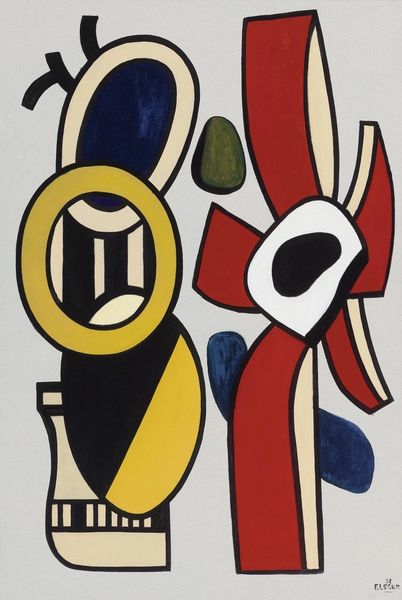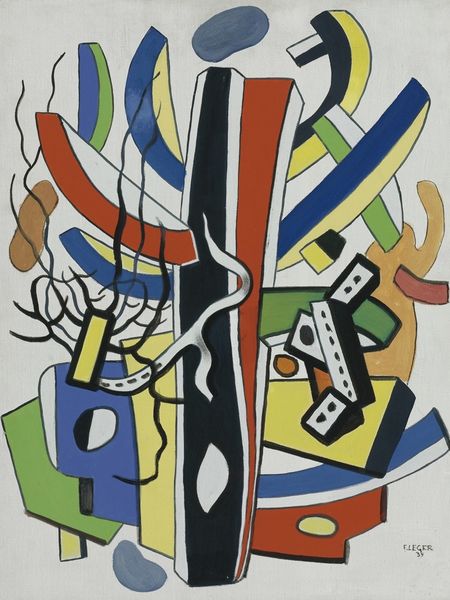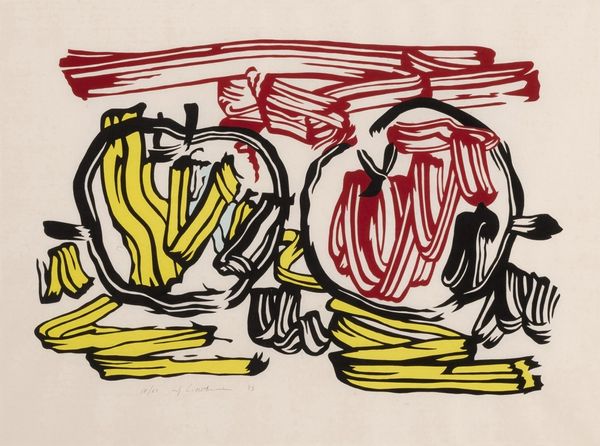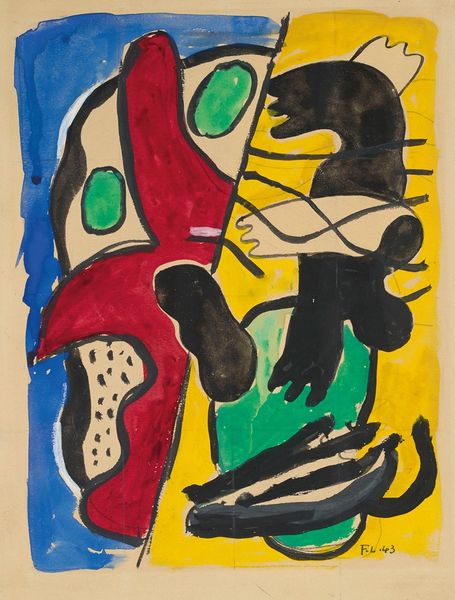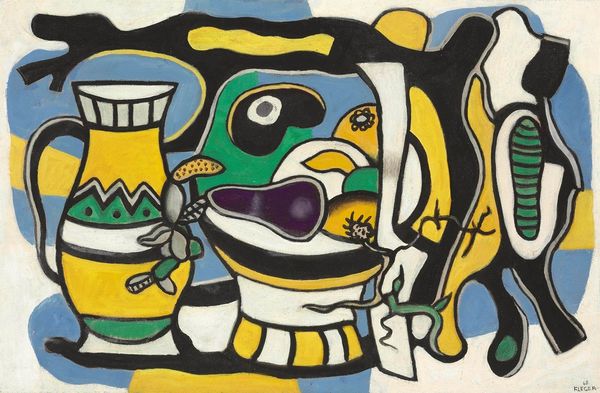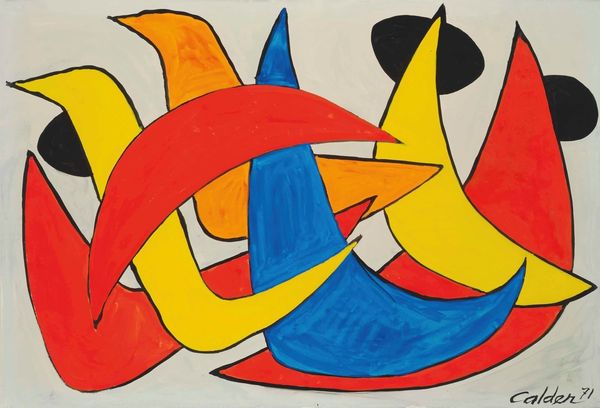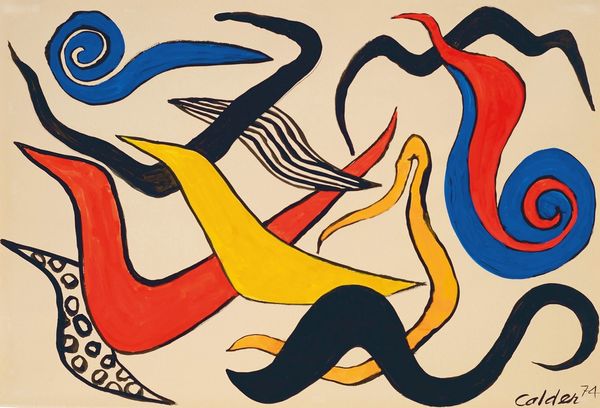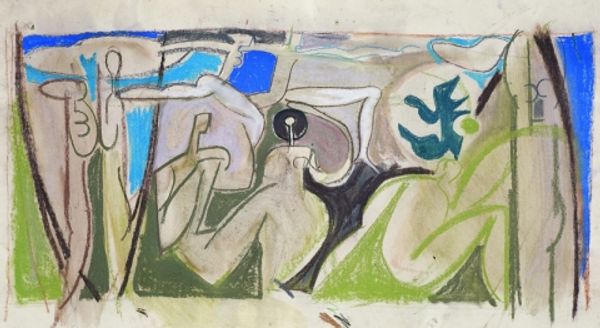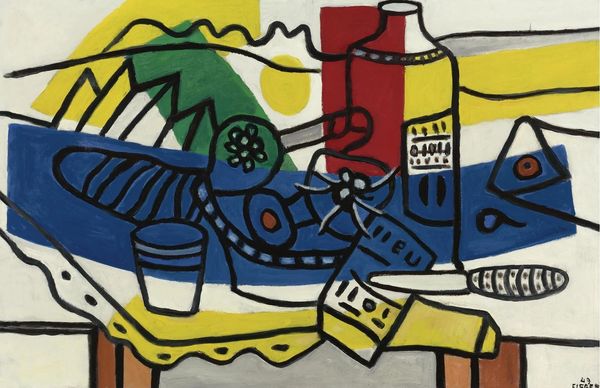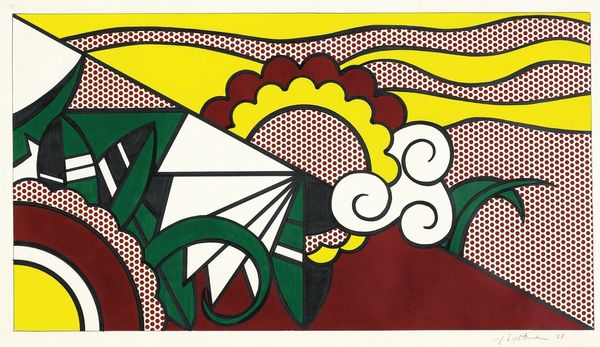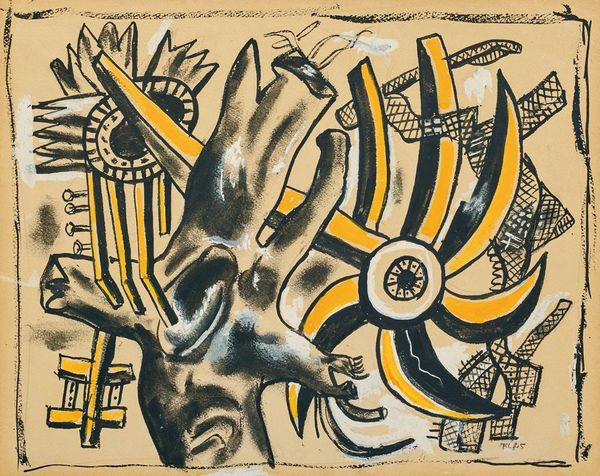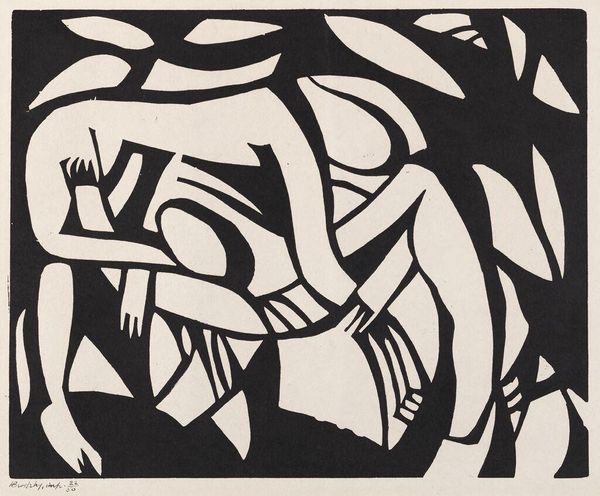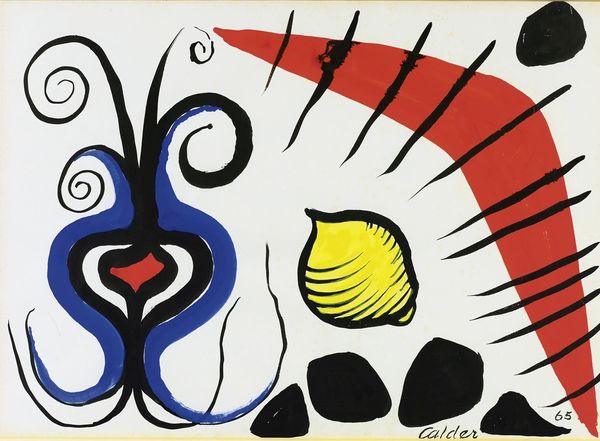
painting, oil-paint
#
cubism
#
painting
#
oil-paint
#
caricature
#
pop art
#
geometric
#
abstraction
#
cartoon style
#
modernism
Copyright: Modern Artists: Artvee
Editor: We're looking at Fernand Léger's "LA FEUILLE ROUGE," painted in 1936 using oil paint. It strikes me as almost playful, like a child's building blocks, yet with a serious underlying structure. How do you interpret this work? Curator: I see this as Léger grappling with the anxieties and tensions of the interwar period. Though appearing abstract, it echoes the socio-political landscape, where fractured ideologies and impending conflict loomed large. That bold red shape - could it be a distorted leaf, or something more…symbolic? Editor: I hadn’t thought about the socio-political context. A distorted leaf suggesting…what, decay, or something more sinister? Curator: Perhaps a warning sign? The machine-like forms alongside it, those stark lines, evoke the rapid industrialization that was simultaneously celebrated and feared. Do you think this juxtaposition creates a sense of unease? Editor: Definitely, especially those almost cartoonish yellow cylinders pressing against that doorway filled with black; it’s like something’s being forced or repressed. Curator: Precisely. Léger, aligned with the Communist Party, often explored themes of labor and the role of the individual within a rapidly changing society. Can we read this compression as representative of working-class constraints or impending threats? Editor: So, what initially appears abstract could actually be loaded with political commentary. It’s about more than just shapes and colours, it's about the climate of a nation? Curator: Exactly! Léger forces us to consider the complex intersection of art, politics, and everyday life. This is an articulation of the human condition set within social forces and philosophical interpretations. Editor: Wow, I’ll never look at Léger the same way again. I was thinking it was "just" Cubism with cartoon features, but I now see he challenges us to engage with pressing global questions. Curator: And that's what makes art history so compelling. We continually unpack what past generations communicate to us today.
Comments
No comments
Be the first to comment and join the conversation on the ultimate creative platform.
